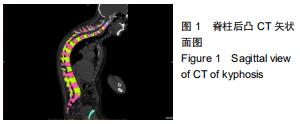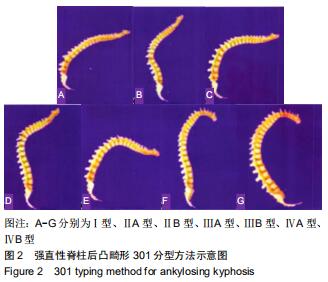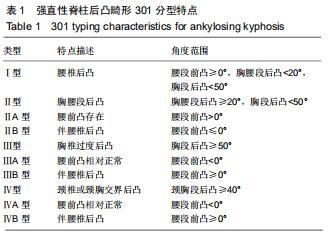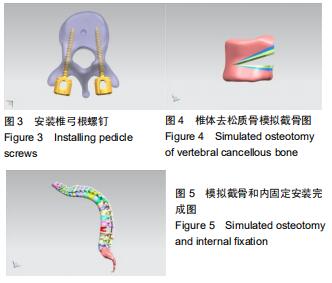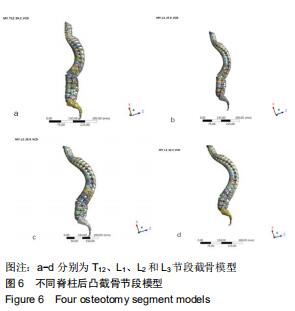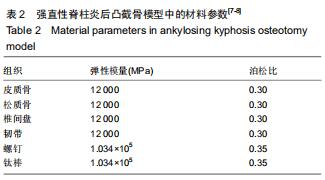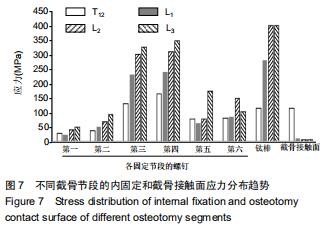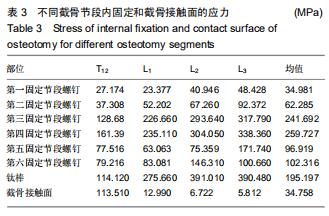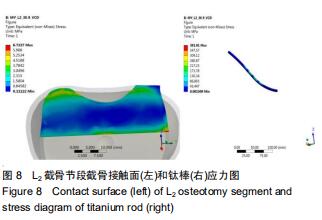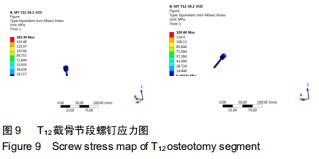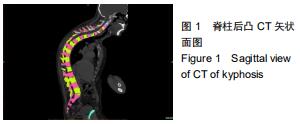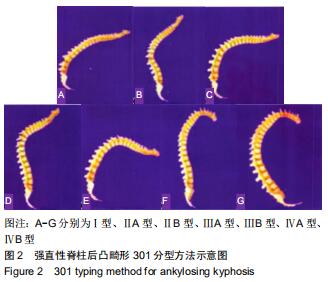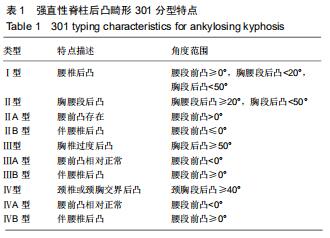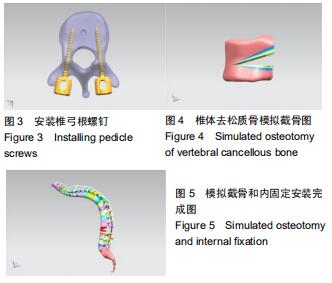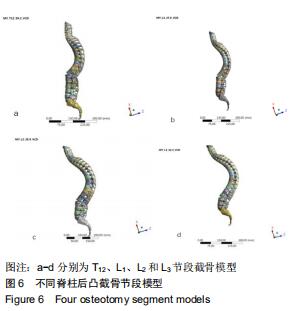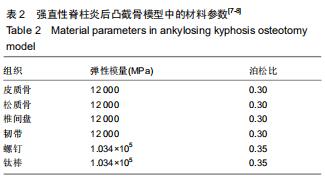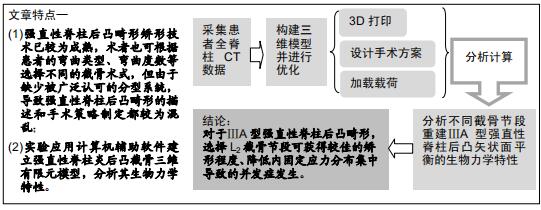中国组织工程研究 ›› 2020, Vol. 24 ›› Issue (30): 4824-4828.doi: 10.3969/j.issn.2095-4344.2798
• 脊柱植入物 spinal implant • 上一篇 下一篇
不同截骨节段重建ⅢA型强直性脊柱后凸矢状面平衡的生物力学分析
李 辉1,高晓玲2,马 原3
- 临汾市人民医院,1心脏大血管外科,2CT室,山西省临汾市 041000;3新疆医科大学第六附属医院脊柱外科,新疆维吾尔自治区乌鲁木齐市 830002
Biomechanical analysis of sagittal plane balance of type IIIA ankylosing kyphosis reconstructed by different osteotomy segments
Li Hui1, Gao Xiaoling2, Ma Yuan3
- 1Department of Cardiovascular Surgery, 2CT Diagnostics Department, Linfen People’s Hospital, Linfen 041000, Shanxi Province, China; 3Department of Spine Surgery, The Sixth Affiliated Hospital of Xinjiang Medical University, Urumqi 830002, Xinjiang Uygur Autonomous Region, China
摘要:

文题释义:
矢状面平衡:由脊柱、骨盆及远端肢体构成。强直性脊柱炎常累及到脊柱、骨盆和髋关节,导致身体矢状面失衡,矢状面失衡会使身体生物力学发生改变,手术的关键目的是重建矢状面平衡。
301分型系统:于2015年首次报道,根据后凸顶点的位置分为4型,分别为腰椎型(Ⅰ型)、胸腰椎型(Ⅱ型)、胸椎型(Ⅲ型)、颈椎和颈胸交界型(Ⅳ型),除Ⅰ型外,其他3型又分为A、B两个亚型,腰椎前凸为A亚型,腰椎后凸为B亚型。
背景:强直性脊柱后凸畸形的矫形技术已较为成熟,术者也可根据患者的弯曲类型、弯曲度数等选择不同的截骨术式,但由于缺少被广泛认可的分型系统,导致强直性脊柱后凸畸形的描述和手术策略制定都较为混乱。
目的:应用计算机辅助软件建立强直性脊柱炎后凸截骨三维有限元模型,分析其生物力学特性。
方法:获取1例301分型ⅢA型强直性脊柱后凸畸形患者的影像资料,建立强直性脊柱后凸畸形三维有限元模型,测量T12、L1、L2和L3 4个不同节段截骨角度,模拟去松质骨截骨术,对截骨矫形后的模型进行钉棒系统固定,分析其生物力学特性。
结果与结论:①截骨节段越靠近尾端螺钉应力越大,螺钉应力分布大小的顺序为L3>L2>L1>T12,不同截骨节段的螺钉应力分布特点相同,都集中在截骨节段的相邻上/下2个节段的螺钉上,明显大于其他节段的螺钉应力;②钛棒的应力大小顺序为L2>L3>L1>T12;③截骨节段越靠近头端截骨接触面应力越大,截骨接触面应力大小顺序为T12>L1>L2>L3;④结果表明对于ⅢA型强直性脊柱后凸畸形,选择L2截骨节段可获得较佳的矫形程度、降低内固定应力分布集中导致的并发症发生。
ORCID: 0000-0002-5310-1492(李辉)
中国组织工程研究杂志出版内容重点:人工关节;骨植入物;脊柱;骨折;内固定;数字化骨科;组织工程
中图分类号:
